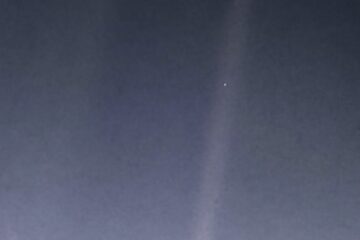Richard Dawkins in The Poetry of Reality:
 In our galaxy of a hundred billion stars, only three supernovas have been recorded by astronomers: in 1054, in 1572, and in 1604. The Crab Nebula is the remains of the event of 1054, recorded by Chinese astronomers. (When I say the event “of 1054” I mean, of course, the event of which news reached Earth in 1054. The event itself took place six thousand years earlier. The wave-front of light from it hit us in 1054.) Since 1604, the only supernovas that have been seen have been in other galaxies.
In our galaxy of a hundred billion stars, only three supernovas have been recorded by astronomers: in 1054, in 1572, and in 1604. The Crab Nebula is the remains of the event of 1054, recorded by Chinese astronomers. (When I say the event “of 1054” I mean, of course, the event of which news reached Earth in 1054. The event itself took place six thousand years earlier. The wave-front of light from it hit us in 1054.) Since 1604, the only supernovas that have been seen have been in other galaxies.
There is another type of explosion a star can sustain. Instead of “going supernova” it “goes information.” The explosion begins more slowly than a supernova and takes incomparably longer to build up. We can call it an information bomb or, for reasons that will become apparent, a replication bomb. For the first few billion years of its build-up, you could detect a replication bomb only if you were in the immediate vicinity. Eventually, subtle manifestations of the explosion begin to leak away into more distant regions of space and it becomes, at least potentially, detectable from a long way away. We do not know how this kind of explosion ends. Presumably it eventually fades away like a supernova, but we do not know how far it typically builds up first. Perhaps to a violent and self-destructive catastrophe. Perhaps to a more gentle and repeated emission of objects,moving, in a guided rather than a simple ballistic trajectory, away from the star into distant reaches of space, where it may infect other star systems with the same tendency to explode.
More here.
